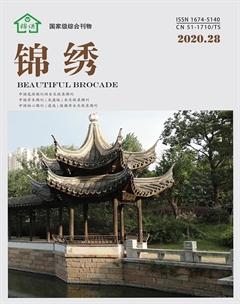On the Construction of Afghan Female Identityin A Thousand Splendid Suns
Wang Yu Li Chunyan
Abstract:This thesis starts with post-colonialism and combines post-colonial criticism theory to discuss how Afghan women achieve their own identity construction.
Key words: A Thousand Splendid Suns; Afghan women; Post-colonialism
1.Introduction
A thousand brilliant suns is a novel written by American Afghan writer Khaled Hosseini. This paper interprets the novel from the perspectives of post-colonial criticism theory, and analyzes the historical origin of the loss of identity.
2.The Causes for the Lack of Womens Identity in Afghanistan
2.1The Oppression of Patriarchal Society
Mary yam, the heroine of A Thousand Splendid Suns, has been shrouded in the title of “Harami” since she was born. She herself is regarded as a part of a mans hereditary property, first owned by her father, then by her husband.” Finally she lost her identity under the long-term oppression of patriarchy. The essence of womans life is materialized and no longer the same as men. Thats what Simon Beauvoir said in second sex.
2.2 The Oppression of Extreme Religion
During the Talibans reign, they always adhered to the doctrine that womans faces could only be seen by their husbands and could not be seen by others, so they had to wear Buka in public. At the same time, the Taliban did not allow women to work, closed womans schools and hospitals, and prohibitedwomen from going out without the company of male relatives, which is the most obvious symbol of religious extremism. In this state of extreme physical and mental bondage, the cultural identity of Afghan women is lost.
2.3 The Oppression of War
Since1979, Afghan people suffered much from war. The country is in turmoil. Women living at the bottom of the country suffered more. Under the oppression of war, in the patriarchal society represented by Zaril, they must obey the will of men to have a chance to survive. In the war that may take peoples lives at any time, in the male dominated social culture, Mariam followed the norms of male dominated society to protect her most basic right to life before she met Leila.
3. The Construction of Afghan Womens Social and Gender Identity
Before Lyra married Rashid, Mariams life was full of despair and pain. She could only endure obedience, and her gender and social status were completely lost. With the arrival of Lyra, Mariams life gradually improved. With the birth of Lyras daughter, Mariam regained her sense of identity and value. Mariam and Leila worked out plans of escaping, resisted Trashiness atrocities and cultivated Azza together. They established a deep sisterhood. Once, Rashid knew about Laila and Ome Zhuma in private. Domestic violence was commonplace for Mariam and Laila, but this time, Mariam, who had been forbearing all of a sudden, tried hard to kill her husband without hesitation. Rashid died on the spot, but Mariam was as calm as water. Mariam suddenly realized that she had someone she wanted to protect, and that someone was loving her and caring for her. At that moment, she gained the feeling she had lost for so many years—she and her behavior are worthy of recognition, it is necessary and reasonable for her to exist in this world. In Leilas heart, in the hearts of all Afghan women, Mariam is admirable. All these contributed to the reconstruction of their social and gender identity.
4.The Construction of Afghan Womens Cultural Identity
The construction of cultural identity in this paper is mainly reflected in the pursuit of equality and freedom. Lailas teacher told her that “if a man does not wear a headscarf, there is no reason to ask a woman to wear it”; this reflects the Afghan womens pursuit of the cultural concept of freedom and equality, as well as the social atmosphere of patriarchy and patriarchy at that time. Leilas father also stressed the importance of female education with him. Men and women are born equal. There should be no racial discrimination, let alone gender differences. The author uses these two characters to express Afghan womens desire for freedom and equality, justice and non discrimination culture, and also hopes to construct Afghan womens cultural identity through education.
5.Conclusion
From the perspective of post-colonial criticism, this paper pays attention to the differences of class, nation and country in all literary works, in order to tear up the illusion of “universal non difference” created in the era of globalization. Men and women are equal, so should countries and races. Every country should strive to eliminate the inequality of “self” and “other”. As the article said, “if a thousand brilliant sunshine can dispel the darkness brought by the smoke of gunpowder in Afghanistan, only love can let us see this brilliant sunshine.”
References
[1]Balaec, Michelle. The Nature of Trauma in American Novels [M]. Illinois: Northwestern University Press, 2012.
[2]卡勒德·胡塞尼.燦烂千阳[M].李继宏译.上海:上海人民出版社,2016.
作者:王玉:女,山东协和学院2016级英语专业学生
李春燕:女,硕士,山东协和学院副教授,研究方向:大学英语教学

